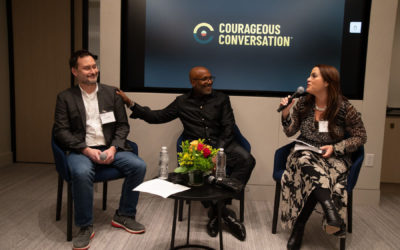By Irina Gonzalez—June 19, 2019
Growing up, I was always confused by school forms which required me to check off a box for my race and ethnicity. I had purely identified as Cuban since my father was born in Havana, so words like “Hispanic” made no sense to me, and with his light skin, my father identified as white due to a history of racism in his home country. So did I need to check “white” or “Hispanic”—and what was the difference between race and ethnicity anyway? Things got even more confusing as I got older and forms started featuring the word “Latino.” Which one was I? Now, confused kids and adults alike have yet another term to choose from: Latinx.
In recent years, the word “Latinx” has become increasingly popular. Just take a look at the rise in Google searches alone for the term.
The phrase has been adopted among people who are looking for a more inclusive and gender-free alternative to “Latino” or “Latina,” which, as Spanish words, are automatically gendered to signify a man or a woman, leaving no option for those who choose to identify as non-binary. While having this alternative is incredibly progressive, its usage can still be a confusing—so consider this your go-to guide for the meaning of “Latinx.”
The word “Latinx” originated in the mid-2000s “in activist circles primarily in the U.S. as an expansion of earlier gender-inclusive variations such as Latino/a (with the slash) and Latin@ (with the “at” sign),” says Joseph M. Pierce, an assistant professor in the Department of Hispanic Languages and Literature at Stony Brook University.
“The ‘x’ does not imply a specific gender—as would the ‘o’ (masculine) or the ‘a’ (feminine) for nouns in Spanish—and is meant to disrupt the grammatical binary that is inherent in this Romance language.”
However, the history of using “x” is lengthier, says David Bowles, a writer, translator, and professor at the University of Texas Río Grande Valley in Edinburg, Texas, who is currently working on a book 0n the word Latinx. “Radical feminists in the 90s (and perhaps as early as the 70s) would sometimes on posters and in graffiti would literally “x” out the “o” at the end of words that were meant to include men, women, and non-binary folk all together.”
The word “Latinx” is ultimately a “non-gendered, non-binary, inclusive way of pushing back against the default masculine in Spanish,” says Bowles.
“It can be pronounced several ways: Using the same pattern as Latino (lah TEE nex, rhyming with ‘kleenex’) or in English (LAT in EX). A few people even say ‘lah TEENKS,'” says Bowles.
However, Latin “equis” (as you would pronounce the letter “x” in Spanish), is not typically used, Pierce says.
“It’s capitalized in English, but not in Spanish,” says Bowles. This is because, as Pierce explains, the word “Latinx” is a proper noun used to refer to a group of people. You would capitalize it in the same way that you would capitalize Black, Indigenous, etc., when referring to a group. It is also capitalized when used as an adjective, such as “Latinx people are amazing,” says Pierce.
The inclusion of the term “Latinx” in the dictionary is a bit polarizing. Yes, the term is currently included in both Merriam-Webster and the Oxford English Dictionary, but Bowles says that “The Royal Academy of Spanish (RAE) refuses to include any use of -x or -e. They insist there is no connection between grammatical gender and gender oppression.”
And while Pierce says that “this inclusion lends legitimacy to the term and marks it as more than just a passing fad,” others believe that whether or not the term is included in the dictionary is irrelevant. “I am not sure being in the dictionary is a benchmark we can aspire to when we are defining categories that describe us, identify us,” says Dr. Luisa Ortiz Pérez, Executive Director of Vita-Activa.org. For her, and many other self-identified Latinx people, the ability to select the terms we want to identify as is more important than a simple dictionary inclusion.
Read more at the Oprah Magazine.




